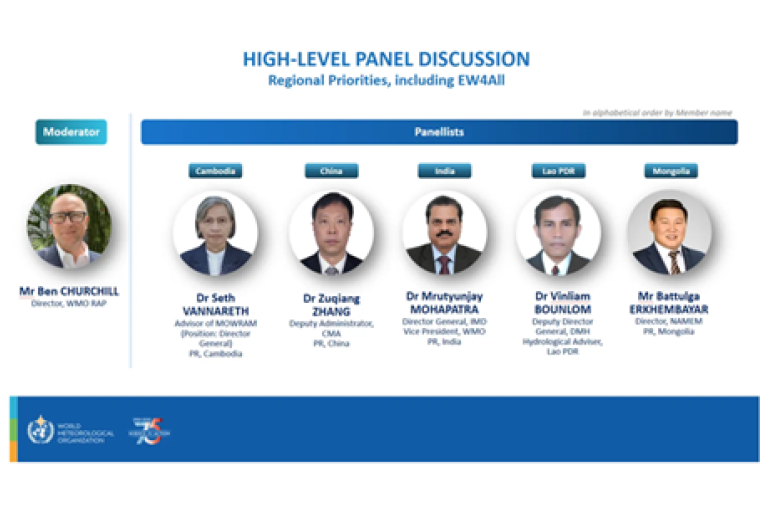Asia’s Determination: Forging Stronger Early Warning Systems

A crucial dialogue at the 18th session of WMO Regional Association for Asia (RA II) has chartered a course for bolstering early warning systems in the region, addressing key challenges and spotlighting collaborative solutions. The session, held from 22 to 25 April 2025, convened leading meteorological and hydrological experts to advance the Early Warnings for All (EW4All) initiative across Asia.
"Asia faces unique challenges due to its geographical diversity. The lack of observational data is particularly acute in oceanic areas, mountainous regions, and areas with challenging socioeconomic conditions", said Dr Mrutyunjay Mohapatra, Director General, India Meteorological Department and WMO Third Vice-President. He stressed the need for a more effective cascading system, linking global centres to regional and national meteorological services to create actionable early warnings. "It's not simply about generating information from models. We need systems to compare and synthesize observational products with model outputs to create actionable early warnings." He also emphasized the importance of implementing the Common Alerting Protocols (CAP) for effective last-mile warning dissemination.
"We have identified weak coordination between National Meteorological and Hydrological Services, unclear roles and responsibilities, and limited financial resources as major barriers", said Dr Seth Vannareth, Advisor, Ministry of Water Resources and Meteorology, Cambodia. She pointed to Cambodia's successful integration of early warning considerations into climate change adaptation plans and disaster risk reduction strategies, along with its establishment of multi-agency coordination bodies involving meteorological, hydrological and disaster management agencies as ways of tackling these issues.
"Insufficient meteorological and emergency operations centres severely limit our ability to respond promptly and manage disasters efficiently," said Dr Vinliam Bounlom, Deputy Director General, Department of Meteorology and Hydrology, Lao PDR, drawing attention to infrastructure shortfalls. He identified several critical gaps: inadequate financial resources specifically allocated for early warning systems; lack of standardized mechanisms for data collection and analysis, limited community awareness and engagement, and the need for systematic capacity development at both community and institutional levels. Dr Bounlom also advocated for incorporating traditional knowledge and indigenous practices into early warning systems.
The session also showcased successful collaboration. "Through KMA (Korea Meteorological Administration) support, we have acquired high-performance computing infrastructure and will increase the horizontal resolution and lead time of our numerical weather prediction models by 2028," explained Mr Battulga Erkhembayar, Director, National Agency for Meteorology and Environmental Monitoring, Mongolia. He also provided insight into Mongolia’s implementation impact-based forecasting with support from the Green Climate Fund. Dr Zuqiang Zhang, Deputy Administrator, China Meteorological Administration, also emphasized the importance of sharing expertise and technical capabilities among regional members, citing China's contribution to weather radar technology and monitoring systems that have benefited neighboring countries.
Momentum is building across Asia to integrate early warning systems and coordination mechanisms into their national frameworks. For example, China is strengthening its resilience through mechanisms like the Progressive Service and High-Impact and Response System, which trigger swift, coordinated action from all stakeholders to minimize the potential devastation of high-impact hazards. This proactive approach underscores a region-wide commitment to fortifying communities against escalating climate threats, complementing the collaborative spirit driving the Early Warnings for All initiative in Asia.
The RA II session underscored the region’s commitment to the Early Warning for All initiative, highlighting the need for continued investment in advanced technologies, enhanced data sharing, and robust communication infrastructure to achieve effective early warning systems across Asia by 2027.


